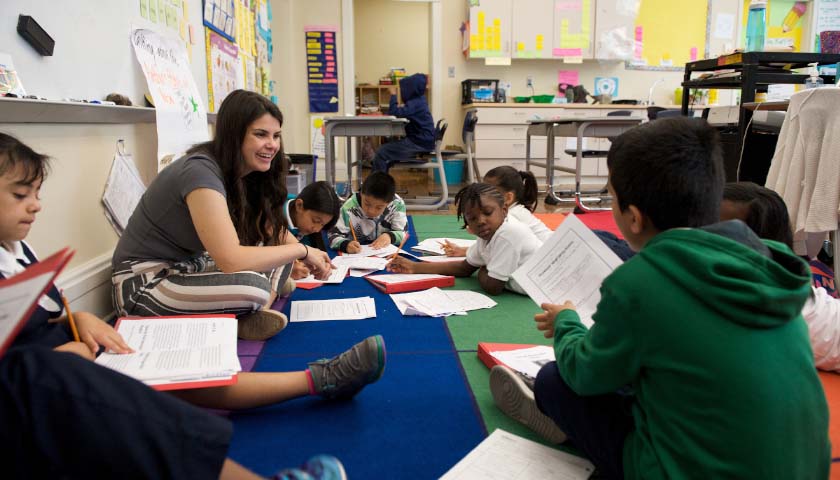by Evan Stambaugh
Minnesota is spending untold millions in COVID-relief funds on controversial education initiatives, like implementing ethnic studies in schools and recruiting teachers on the basis of race.
President Joe Biden’s $1.9 trillion COVID relief package included $122 billion for the Elementary and Secondary School Emergency Relief (ESSER) Fund. Minnesota received a total of $8.5 billion in American Rescue Plan funds, $1.3 billion of which came from ESSER.
This money was intended in part to help schools facilitate and maintain in-person learning and develop after-school or “summer enrichment” programs.
Like other states, Minnesota seized this opportunity to accomplish seemingly unrelated objectives. According to its approved proposal for the $1.3 billion in ESSER funds, unknown sums were spent on objectives like recruitment and retention programs “specifically for teachers of color and Indigenous teachers,” the development and implementation of “ethnic studies,” and “Indigenous education curriculum processes.”
Manuel Rustin, a high school teacher in Pasadena, Calif., helped draft his state’s “Ethnic Studies Model Curriculum.”
“Ethnic studies without critical race theory is not ethnic studies. It would be like a science class without the scientific method then. There is no critical analysis of systems of power and experiences of these marginalized groups without critical race theory,” he said at the time.
The teacher recruitment effort seems to mirror controversial policies put into practice at lower levels of government, like when the school board in Mankato, Minn., approved special bonuses for non-white teachers only.
Other measures like “support[ing] gender equity for all students” will ask schools to “promote positive gender identities — defy stereotypes by gender (social identity as male, female or non-binary).”
“Empower all students — critically examine gender bias and affirm students’ sense of self and others’ value,” the proposal states.
Another section of the proposal calls for “professional development” in the areas of “anti-bias/anti-racist instructional practices.”
The state has disclosed how much some of the programs cost — like the $3 million “trauma informed/anti-bias instructional practices training.” Another $3 million was “dedicated to non-exclusionary discipline training and policy refinement,” a tactic that has been criticized for keeping violent students in the classroom.
Although the state’s ARP spending plan was outlined last summer, it appears that it is still in the process of finding vendors to carry out its agenda. For example, the Minnesota Department of Education just stopped receiving applications for its “anti-bias and trauma-informed principles and practices training and supports grant” late last month.
“The grants are to develop training and to work with schools to train staff on anti-bias and trauma-informed practices that build critical skills like intergroup and self-awareness, empathy, openness, equity and justice, cultural competence, teamwork and cooperation,” according to the application page.
Similarly, the deadline for vendors looking to be hired to provide non-exclusionary discipline training elapsed just a few weeks ago.
Minnesota is not the only state to appropriate federal tax dollars towards progressive agendas in schools. Thirteen states ranging from Nevada to Rhode Island all used ARP money to pursue such aims, according to research from One Nation.
California’s $15.1 billion plan called for using funds to promote “LGBTQ+ cultural competency,” for example.
“It turns out President Biden’s so-called American Rescue Plan was a multitrillion-dollar progressive shopping list, a massive bait-and-switch for life-saving COVID aid,” said One Nation President Steven Law. “Indoctrinating children to judge themselves and one another based on the color of their skin is wrong and has nothing to do with fighting COVID or getting our economy back on track.”
This is all apparently in accordance with the federal Department of Education’s wishes. The agency told school districts that they should use their ARP funds to “implement strategies designed for systemic change at the local and school level.”
– – –
Evan Stambaugh is a freelance writer who had previously been a sports blogger. He has a BA in theology and an MA in philosophy.
Photo “Teacher and Students” by U.S. Department of Education. CC BY 2.0.







